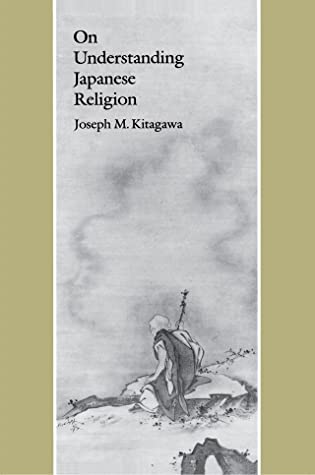

 |

|

The average rating for On Understanding Japanese Religion based on 2 reviews is 4 stars.
Review # 1 was written on 2012-03-31 00:00:00 Steve Atkinson Steve AtkinsonJoseph Kitagawa was a pioneer in the study of Japanese religion in American academia. This book is a collection of essays published in different places for somewhat different purposes, and, as such, it sometimes repeats itself more than a full-length approach would. But Kitagawa is more than thorough, from the early and mutual influences between Korea and Japan, including the mysterious Ainu minority, through the adoption of Japanese religion by many in this country. The overall picture that emerges is of a country manipulated by its elite, first the clan rising above its peers and developing a monarchy, insistent on its identification with the Sun Goddess. Later Emperors and the successive families that controlled them developed a full version of the native worship of local spirits into Shinto, alternating it with a Buddhism that owed little to Asoka, the great Indian pacifist king, and even less to Gautama himself. The Korean influence introduced Japan to a Buddhist tradition translated from Korean texts, themselves translated from the Chinese, and even the latter translated, after arduous journeys to India, from the originals. It is little wonder that something was lost along the way. The Chinese influence also brought with it Confucianism, which with Shinto and Buddhism made an awkward triangle during much of Japanese history, as one allied with the other against the third, only for the next powerful clan to reconfigure them all into a new pattern. The Tokugawas made every family register as Buddhist, prohibited Christianity and closed the country to Westerners. The Meiji restoration of imperial power that succeeded them opened the country to the West, tolerated Christianity, but sought to validate itself by embracing the native Shintoism and making it an arm of the state. Buddhism showed the most fecundity, ranging from the popular Pure Land sects, which posit an afterlife much like Christianity's, through the esoteric sects focused on the disciplined search for knowledge and faith, to Zen, with its emphasis on meditation and ritual. If Kitagawa avoids a few controversial issues, like the involvement of Zen with the militarism of World War II, the breadth of the panorama is spectacular. At the end, it looks like, as in few countries or religions, the imperial institutions and the clan-based bureaucracies that often controlled them made deliberate use of whichever religions seemed the most propitious at the time. It is almost as though Japan was ruled by a series of Constantines who, whatever their beliefs, used religions as tools to forge and unify the Empire. |
Review # 2 was written on 2015-03-22 00:00:00 Terri Harn Terri HarnPeyote is a sacred entheogenic and endangered plant which has a long and rich religious tradition around it in the Americas. This book is a very well researched guide to the history of peyote use throughout North America -- from it's multicultural use and ceremonies (both white/colonizer and indigenista), to the controversies and racist criminalization by the US Federal government. 4 stars - very important book on the topic, but the writing is a bit academic. |
CAN'T FIND WHAT YOU'RE LOOKING FOR? CLICK HERE!!!